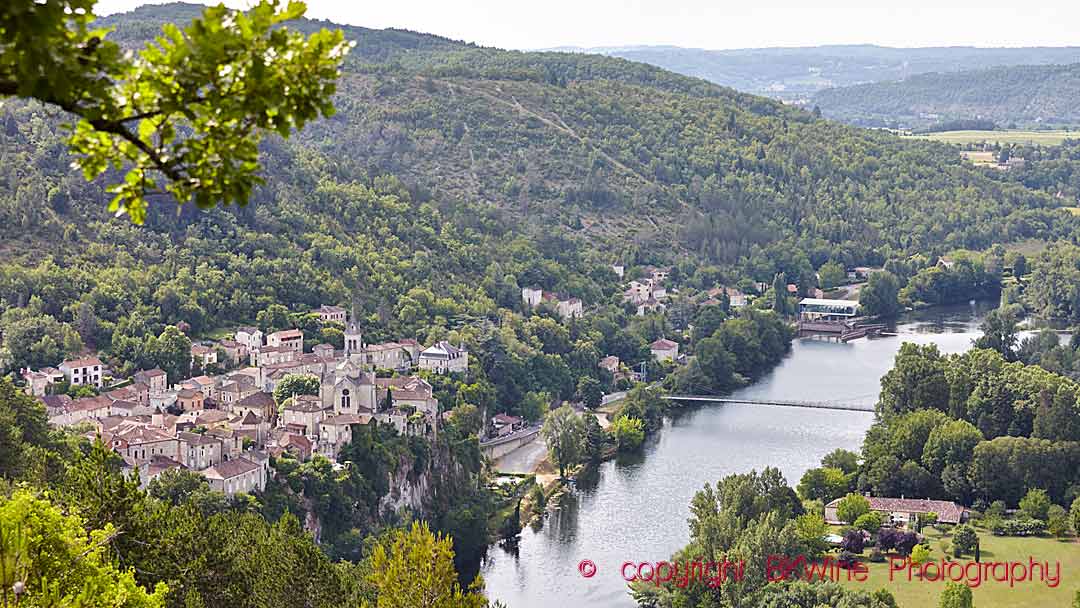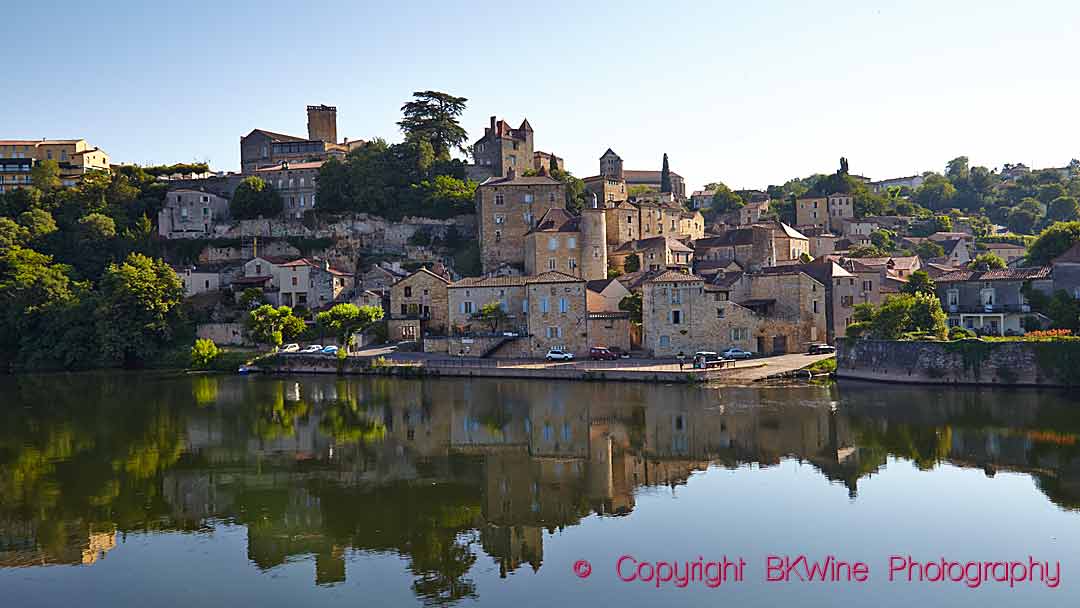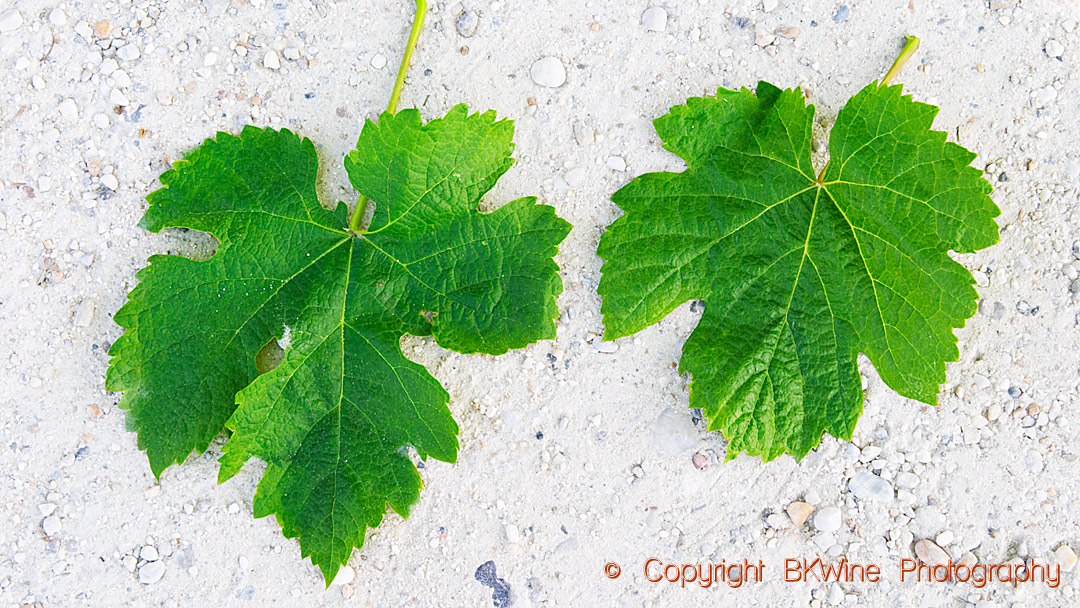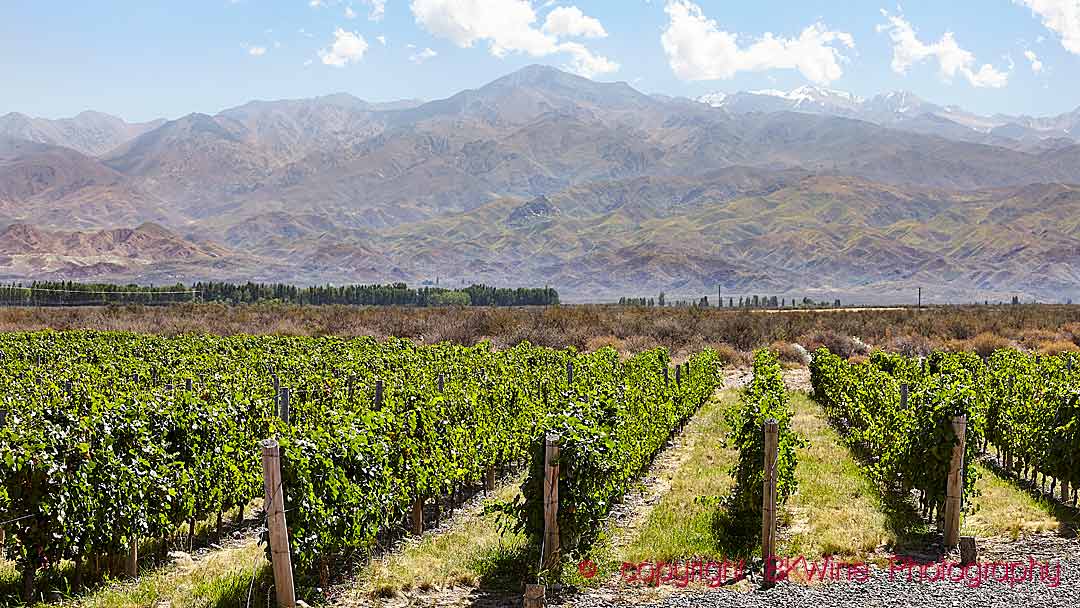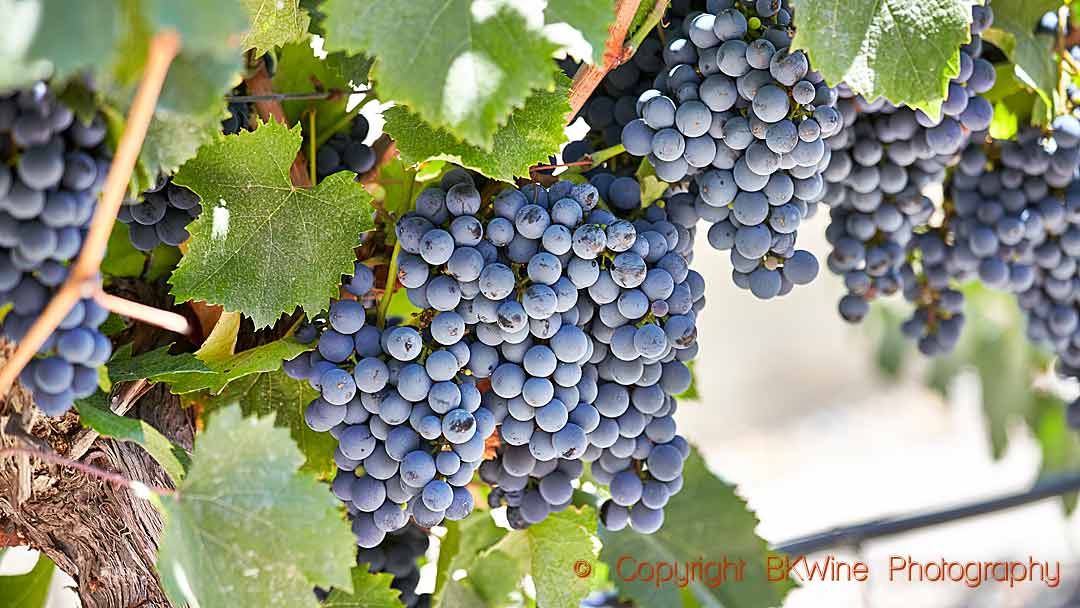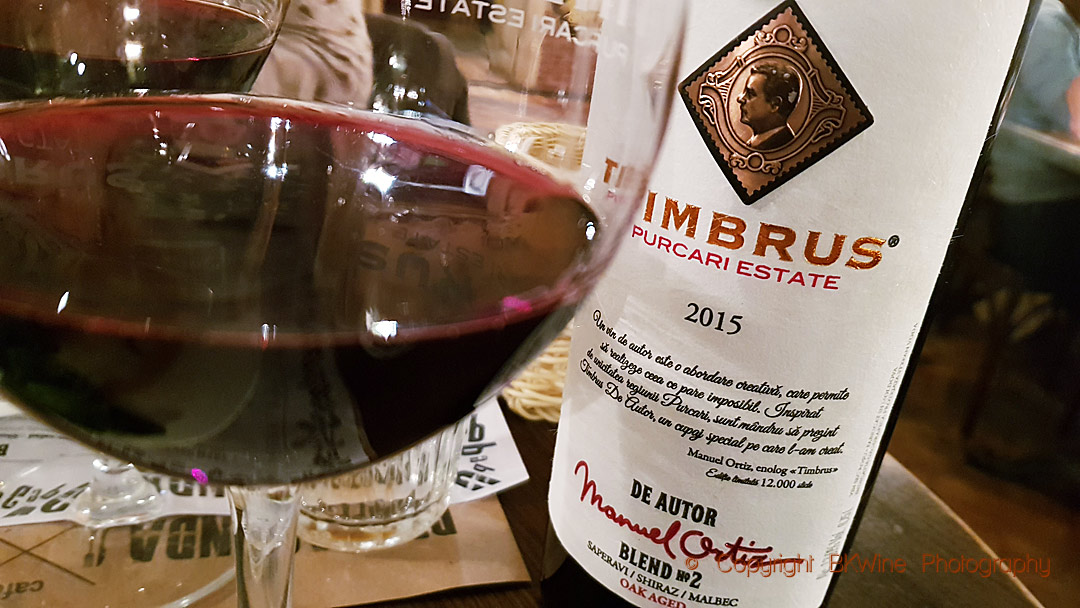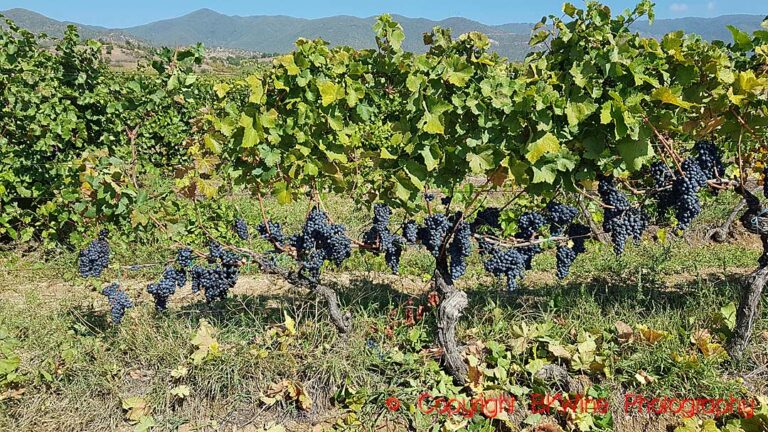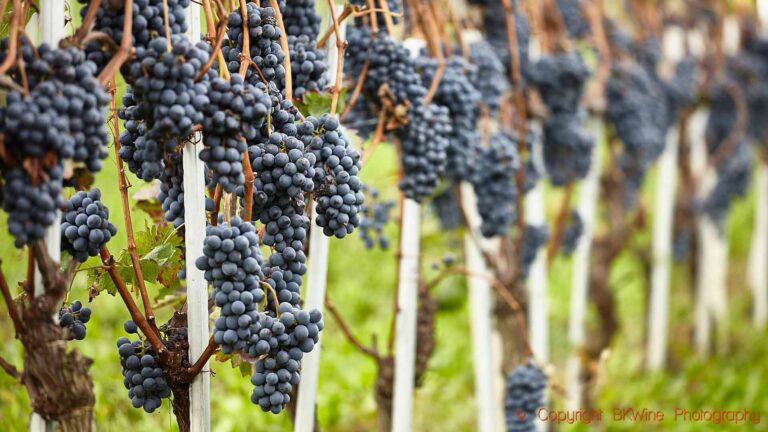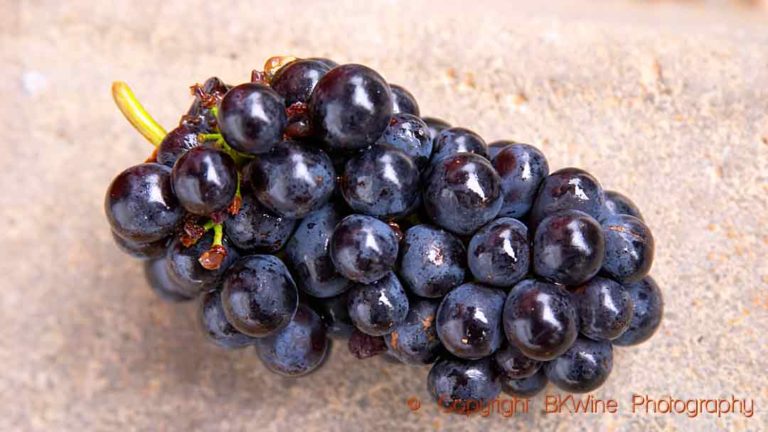Malbec is a French grape variety, although people might be forgiven for thinking it is Argentinean. France has 6,000 hectares, Argentina 40,000 ha. Just like many of the other Bordeaux grapes, malbec has been adopted by a country far away from home. Malbec is a big success in Argentina. In Bordeaux, the surface is dwindling. In Cahors though, the true stronghold of malbec in France, the grape is very much alive and kicking.
Malbec is originally from the Cahors region in the South West, some 200 km west and a bit south of Bordeaux. From Cahors it spread to Bordeaux. The original name of the grape is probably auxerrois but it could also be côt, a synonym used in certain regions. It is hard to know, but as most people know it by malbec, we prefer to use that name. Another well-known synonym of malbec is pressac in Saint Emilion. The name malbec comes from a Monsieur Malbeck in Médoc who distributed the grape under his own name in the 18th century.
Malbec came to Argentina’s largest wine region Mendoza in the mid-19th century. It had to adapt to the warmer and drier climate, which it did remarkable well. Argentina is today by far the world’s largest malbec country with three quarters of the total acreage.
This is a longer version of an article published on Forbes.com.
This is an article in our series of presentations of the world’s most popular and exciting grape varieties. Read other articles here:
Malbec characteristics
Malbec wines are dark in colour. These are full-bodied wines, sometimes very intense and concentrated with good acidity and tannins. The aromas are violets, blackberries, plums and various dark fruit. You can keep them in the cellar for many years without problems, but with their delicious, often refreshing fruit, you can enjoy them young as well. Malbec wines are marvellous with food whether they are young or old.
It is not very sensitive to fungus diseases. It is vigorous though, so it is important to keep the yields down by choosing an appropriate rootstock and having high planting density. For best quality, the grapes must be fully ripe at picking, one reason why it likes it so much in Argentina.
France
In France malbec is found throughout western France, in the Southwest, in Bordeaux and in the Loire Valley. Cahors in the Southwest made Malbec famous already in the 12th century. It is also one of the six permitted red grapes in Bordeaux. Malbec also makes excellent wines in Touraine (Loire). However, all these regions have small quantities of malbec vineyards compared to Argentina, where it has grown at a record rate since 1990, from 10,000 hectares to today’s almost 40,000 hectares.
Cahors
Cahors is one of the great red wines of the Southwest. The wines often have a dense structure and intense fruit. They can be really powerful. But Cahors wines today are often elegant with less marked tannins. It doesn’t mean, though, that they are lightly built. They have intense fruit aromas, often crushed ripe dark berries. A Cahors must be at least 70% malbec, and many are 100% malbec. A maximum of 30% of merlot and/or tannat is permitted. Today, Cahors has around 3,300 hectares of malbec.
The English appreciated the Cahors wines in the 12th and 13th centuries. Exporting their wines through the port of Bordeaux, though, were at times problematic. The wines from the inland, including Cahors, were subject to high tariffs. And the Cahors growers were not allowed to use the port of Bordeaux to ship their wines whenever they wanted. But the Bordeaux producers knew how to use the full-bodied wines from the inland. Until the 18th century, or even longer, they sometimes blended their Bordeaux wines with some Cahors to give them more colour and taste before being shipped.
Cahors today is a very dynamic wine region with lots of ambitious and innovative growers. For the last 20 years, a lot of research has been done on the complex soil that the region has. Nine different types of soil have been identified, some along the sides of the river Lot, others on the limestone plateau several hundred meters above sea level. All this will help the growers do maximize malbec’s quality potential. Three quarters of the producers are cave particulière, so bottling their own wines.
One sometimes hears people talk about “the black wines of Cahors”. It is even sometimes used by the Cahors region itself. This comes with a description of an impenetrable colour and fearful tannins that are said to need decades to soften. This is unfortunate and undeserved. It rather tends to scare people away than to attract. It is very rare today – very rare indeed – that wines from Cahors are so dense and rough. Today they have plenty of fruit and often have excellent balance. To us, the “black” wines of Cahors is a thing of the past.
Cahors facts:
- Around 4000 ha vineyards
- Malbec is the main grape variety, with also merlot and tannat
- Along the Lot river valley
- Only red wine
- Read more about Cahors:
Bordeaux
Malbec is one of six permitted red grapes in Bordeaux (cabernet sauvignon, merlot, cabernet franc, malbec, petit verdot, carmenère). But there is not much malbec left in Bordeaux, only 900 hectares. Before the winter frost in 1956, there were 5,000 hectares, but many producers replaced their malbec vineyards with merlot, which is easier to grow.
Malbec needs to be fully mature at harvest time not to get too harsh or herbaceous. What is left today in Bordeaux is mainly on the right bank. In Bourg and Blaye, you can find wines with 10% malbec in the blend. The grape is always a bit more tannic here in Bordeaux than in Argentina.
Bordeaux facts:
- Some 110,000 hectares
- Main grapes: merlot, cabernet franc, cabernet sauvignon
Loire
Malbec thrives very well in the eastern part of the central Loire, in Touraine, close to all the magnificent royal castles for which the Loire has become world-famous. It is often called côt here in the Loire. The grape is found in the following appellations: Rosé de Loire, Touraine, Touraine Amboise, Touraine Azay-le-Rideau, Touraine Chenonceaux and Touraine Mesland. The climate in the Loire is sometimes a bit too chilly for malbec to ripen properly, but it can, especially if you keep the yields low. The result is often excellent.
Argentina
Malbec is Argentina’s most famous grape variety. Since 1990, the plantations have grown at a record pace. In 1990 there were 10,000 hectares; in 2000, the surface had grown to 16,500, and now it is 40,000 hectares. Argentine Malbec has had great success in the United States. Many US consumers believe that the grape originates from Argentina, which is understandable.
The surface area has snowballed. And the Argentinean malbec wines have changed, from fruity unpretentious to something more complex. Today, ambitious producers realize that in certain places, you can obtain higher quality from the grape. Argentine malbec is no longer just decent volume wines. Far from it.
The vineyards planted on higher altitudes, on the Andes’ Mountain slopes, benefit from a cooler climate. Traditionally, vineyards have been planted on the plains. At higher altitudes, it is easier to retain the acidity in the wines. The sub-region or the vineyard’s name are emphasized and sometimes displayed on the label. Sometimes the producer even adds the altitude of the vineyard on the label.
An Argentinian Malbec in the low-price segment is still a smooth, easy-to-drink wine. For a few dollars more, there are many “serious” and nuanced malbec wines. If we generalize, a South American malbec has more fruit and ripeness, and a French one has more tannins and structure.
Argentina facts:
- 215,000 hectares of vineyards
- 40,000 hectares of malbec, the most planted grape variety
- Mendoza is the biggest region with almost 150,000 ha
Other countries
Chile has around 2,000 hectares of malbec, some of them over 100 years old. We find malbec, for instance, in Colchagua, where it is usually blended with cabernet sauvignon. The United States has 1,600 hectares, a significant increase over the past 20 years, perhaps because Americans are fond of the Argentine version. New Zealand, Australia, South Africa, Israel, Italy and several other countries make small quantities.
Malbec quick facts
Acreage worldwide: 52,000 ha
Main countries where malbec is grown:
- Argentina 40,000 ha
- France 6,100 ha
- Chile 2000 ha
- USA 1,600 ha
Malbec’s character: Dark in colour. Full-bodied, dense structure, sometimes really powerful, with good acidity and tannins. Sometimes fruity and easy-drinking. Aromas of violets, blackberries and plums.
Travel
An excellent way to explore and learn all the characteristics of malbec, and to taste some if the great wines it produces is to join us at BKWine on the spectacular wine tour to Argentina and Chile.
Travel to the world’s wine regions with the wine experts and the wine travel specialist.
Spectacular wine tours. BKWine wine tours.




